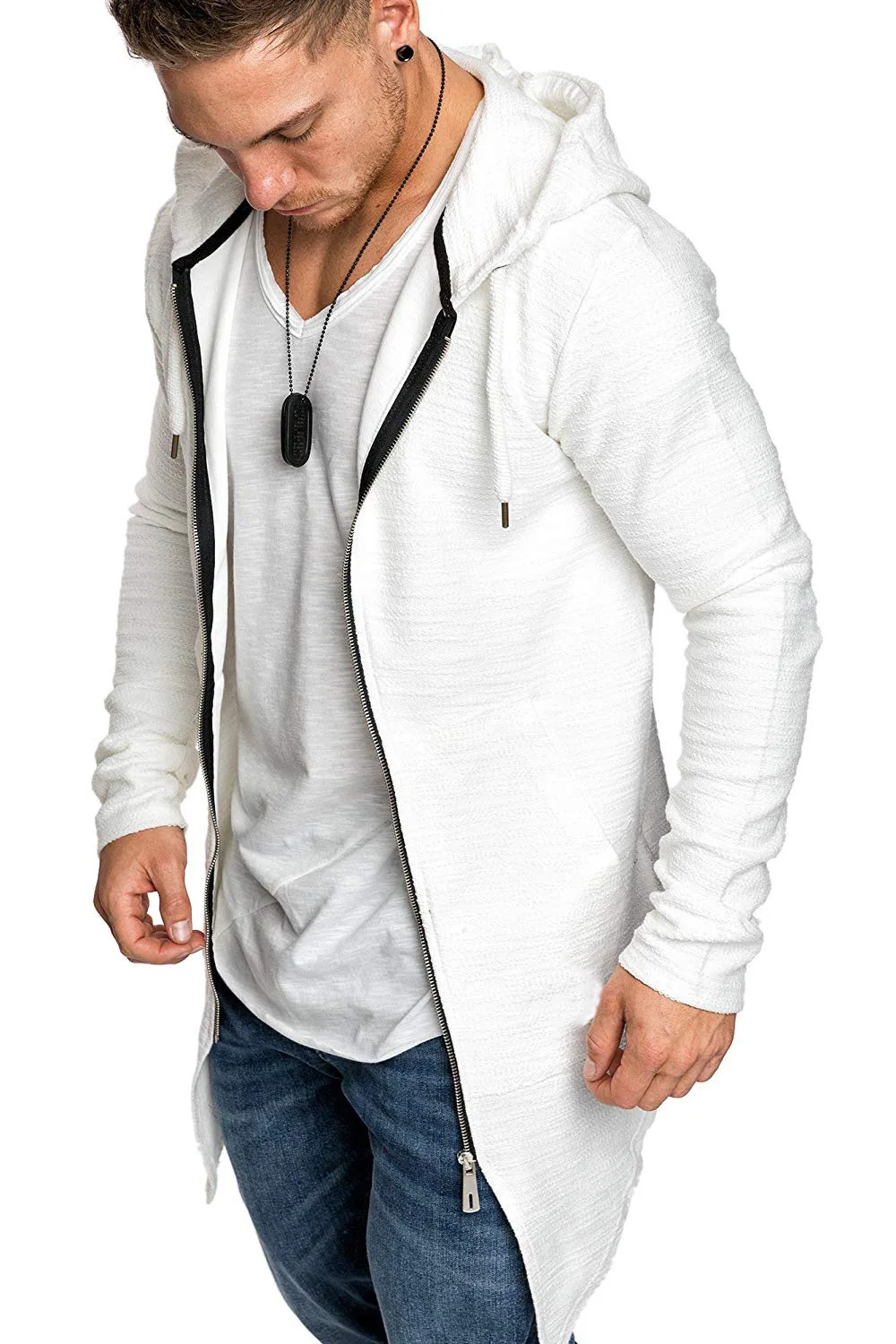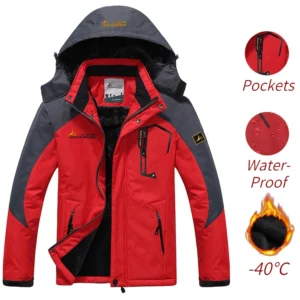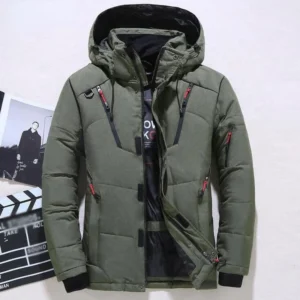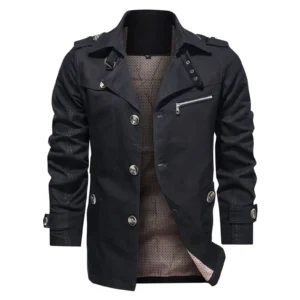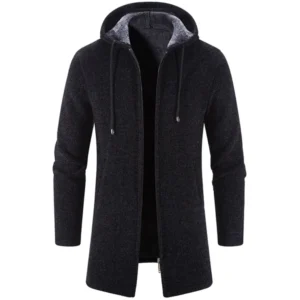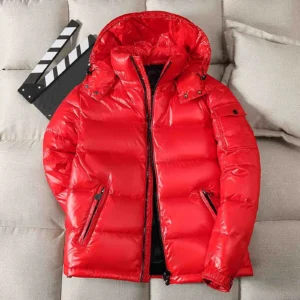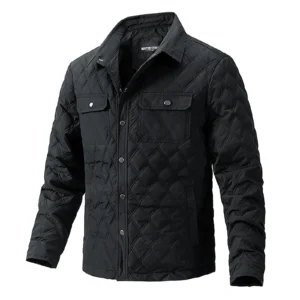Introduction: Conquering the Coldest Environments
When temperatures plummet below 0°F (-18°C), ordinary winter wear simply doesn’t cut it. In extreme cold, proper outerwear becomes more than a comfort consideration—it’s essential for safety and survival. The difference between an adequate coat and an exceptional one can mean the difference between enjoying the outdoors and enduring a miserable or potentially dangerous situation.
At Metro Cloak, we understand the critical importance of reliable protection in harsh winter environments. This guide represents countless hours of field testing, material analysis, and practical experience to help you identify truly exceptional cold-weather gear. We’ll walk you through everything from insulation types and construction features to the performance characteristics that separate the merely good from the truly outstanding.
Understanding how coat length affects warmth in extreme cold is just one of many factors we’ll explore in depth. When facing bitter cold, every design element matters—from hood construction to closure systems to insulation distribution.
Key takeaways you’ll gain:
– How to evaluate insulation quality and quantity
– Critical design features that prevent heat loss
– How construction techniques impact overall warmth
– The importance of proper fit for thermal efficiency
– Practical maintenance tips to preserve performance
Whether you’re planning an arctic expedition or simply live in a region where winter means business, our comprehensive assessment of winter coat options will guide you to the perfect protection for even the most challenging conditions.
Our Rigorous Testing Methodology
To provide recommendations you can trust, we’ve implemented a comprehensive evaluation process that goes far beyond casual wear or manufacturer specifications. Our testing protocol subjects each coat to a range of extreme conditions that reveal their true capabilities.
Testing Environments
- Arctic conditions with ambient temperatures from -40°F (-40°C) to 20°F (-6°C)
- High-altitude locations with significant wind exposure
- Urban winter settings with fluctuating temperatures and varied activity levels
- Wind chill testing in conditions simulating up to -60°F (-51°C)
Evaluation Criteria
- Static warmth (standing or minimal movement for 2+ hours)
- Active warmth (sustained movement for 4+ hours)
- Wind resistance under controlled and natural conditions
- Water and moisture management
- Breathability during varied exertion levels
- Functional features (pockets, closures, adjustments)
- Durability of materials and construction
Our testing team includes outdoor professionals, winter sports enthusiasts, and individuals who work in cold environments daily. This diverse group helps ensure our assessments consider different body types, activity levels, and cold sensitivity.
Understanding the impact of coat length on performance in extreme conditions is crucial to our methodology. We carefully evaluate how design choices affect overall protection in real-world scenarios, not just controlled environments.
By combining objective measurements with subjective comfort assessments, we’re able to provide recommendations that balance technical performance with practical usability—ensuring you get protection that works in the real world.
Key Factors That Define the Warmest Coats
The difference between a good winter coat and an exceptional cold-weather performer comes down to several crucial elements. Understanding these factors helps you make informed choices beyond marketing claims or price points.
Insulation: The Core of Warmth
- Down Fill Power: Higher numbers (800-900+) indicate better quality down with superior loft and insulating properties. Premium down traps more warmth with less weight.
- Fill Weight: The actual amount of insulation used—more fill generally means more warmth, regardless of fill power.
- Synthetic Innovations: Advanced synthetic insulations can maintain warmth when wet and often offer better value, though typically with more weight for equivalent warmth.
- Distribution: How insulation is placed and secured affects overall warmth—body mapping technology puts more insulation where it’s needed most.
Weather Resistance
- Windproofing: Even the best insulation fails if wind cuts through—tightly woven outer fabrics and proper sealing at openings are essential.
- Waterproofing vs. Water Resistance: In wet cold conditions, keeping dry becomes critical for maintaining warmth.
- Breathability Balance: Allows moisture to escape during activity while preventing external moisture penetration.
Construction Techniques
- Baffling Systems: How insulation chambers are designed affects warmth distribution and prevents cold spots.
- Seam Sealing: Properly sealed or bonded seams prevent heat loss and moisture penetration at vulnerable points.
- Draft Prevention: Inner cuffs, snow skirts, drawcords, and other features that seal out cold air at openings.
Examining the heavy winter coat options reveals how manufacturers implement these factors in different ways. The most effective designs combine multiple approaches to create comprehensive protection.
Design and Coverage
- Coat Length: Longer coats provide more coverage and trap more warm air, crucial for extreme conditions.
- Hood Design: An insulated, adjustable hood with facial protection can significantly increase overall warmth.
- Closure Systems: Multiple closure methods (zippers with storm flaps, snaps, etc.) provide better sealing against cold.
The warmest long winter coats incorporate extended coverage with strategic insulation placement to maximize protection without compromising mobility. When evaluating options, consider how these elements work together rather than focusing on a single feature.
The Absolute Warmest Men’s Coats for Extreme Cold
After extensive testing in brutal conditions, we’ve identified the true standouts for extreme cold protection. Our rankings prioritize genuine warmth performance over brand prestige or marketing claims, focusing on coats that deliver reliable protection when the temperature plummets.
This curated selection represents diverse approaches to extreme-weather protection, with options suited to different activities, environments, and preferences. While premium materials and construction do command higher prices, we’ve identified options across various price points that deliver exceptional performance.
We’ve organized our recommendations by use case rather than simply by temperature rating, recognizing that “warmest” can mean different things depending on your specific needs. Whether you’re standing at a bus stop in Minnesota, working outdoors in Alaska, or embarking on a polar expedition, you’ll find options suited to your particular challenges.
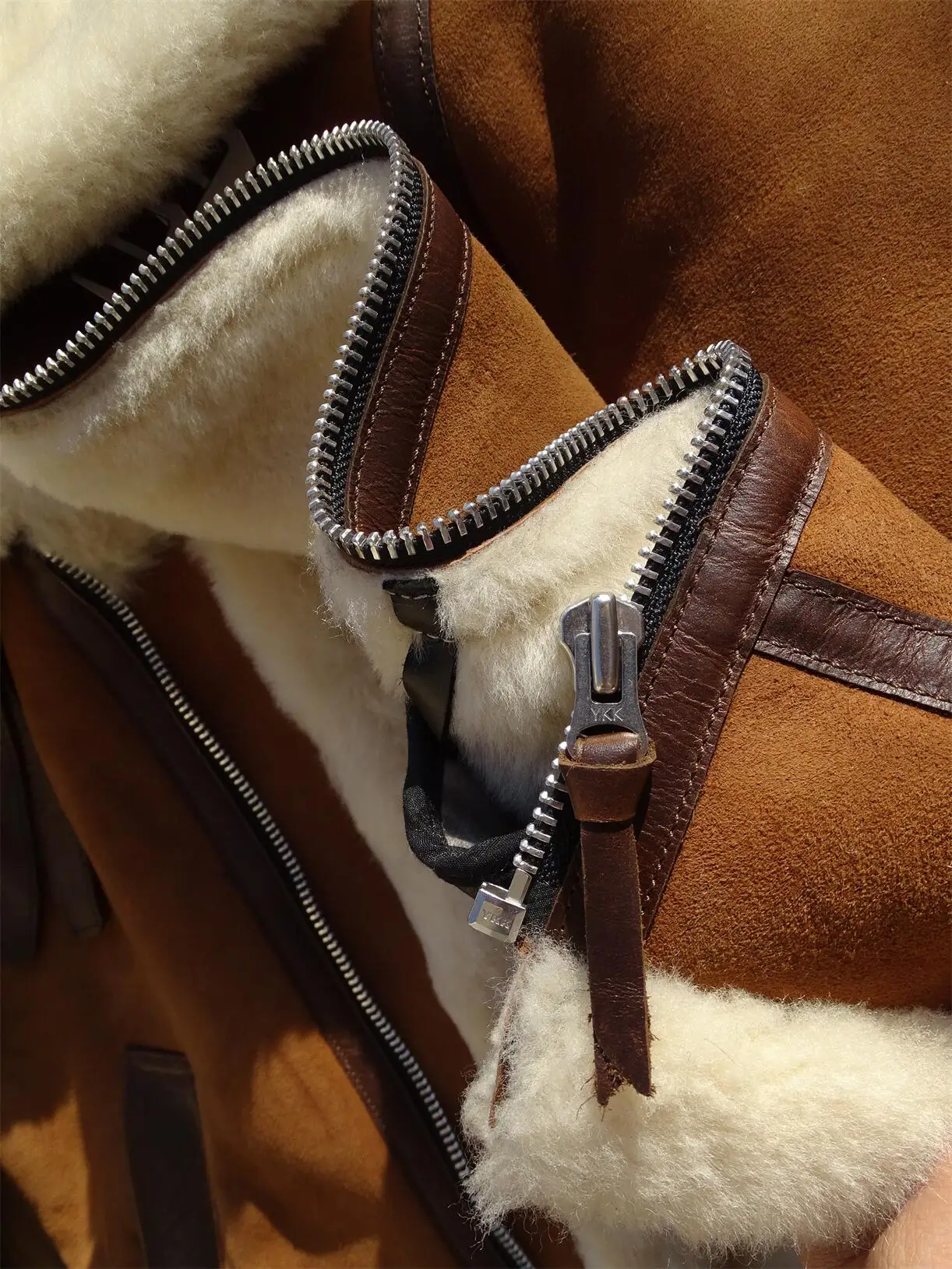
The exceptional insulating properties of shearling coats make them standouts for dry cold conditions, though they require different care and offer different performance characteristics than technical shells. We’ve included diverse construction styles to accommodate various needs and preferences.
Overall Champion: The Arctic Defender Expedition Parka – Unmatched Warmth & Performance
For the ultimate combination of extreme warmth, weather protection, and practical features, the Arctic Defender Expedition Parka stands alone. This remarkable coat represents the pinnacle of cold-weather engineering, delivering reliable protection in the most challenging conditions.
Technical Specifications:
| Feature | Specification |
|---|---|
| Insulation | 900+ fill power goose down with hydrophobic treatment |
| Fill Weight | 13.8 oz (391g) |
| Shell Material | 3-layer waterproof/breathable fabric with DWR finish |
| Weight | 4.2 lbs (1.9kg) |
| Temperature Rating | -40°F (-40°C) and below |
| Hood | Tunnel design with removable fur ruff and wire brim |
| Length | Mid-thigh coverage |
Superior Warmth Features:
The Arctic Defender achieves its remarkable warmth through strategic insulation distribution, placing additional down through the core and upper arms where heat retention is most critical. The baffling system prevents down migration while minimizing cold spots at seams.
The coat’s exceptional performance in our static cold tests—maintaining comfort for over two hours at -35°F (-37°C)—puts it in a class of its own. Even more impressive is its ability to adapt to varied activity levels without overheating, thanks to underarm vents and an adjustable hem system.
The outer shell provides complete wind protection while maintaining adequate breathability for active use. The waterproof membrane and sealed seams ensure protection remains consistent even in wet conditions—a crucial consideration when evaluating down coat options for varied winter environments.
While the price reflects its premium materials and construction, the Arctic Defender represents a sound investment for anyone facing truly extreme cold, with durability testing suggesting many seasons of reliable performance.
Best for Arctic Expeditions: The North Quest Polar Explorer
For those venturing into the most extreme environments on earth—where temperatures regularly plummet below -40°F (-40°C)—the North Quest Polar Explorer provides uncompromising protection developed specifically for extended exposure in harsh polar conditions.
Technical Specifications:
| Feature | Specification |
|---|---|
| Insulation | 850 fill power goose down with differential baffle thicknesses |
| Fill Weight | 17.6 oz (499g) |
| Shell Material | High-denier ripstop with enhanced wind resistance |
| Weight | 5.3 lbs (2.4kg) |
| Temperature Rating | -60°F (-51°C) |
| Hood | Oversized expedition hood with face shield and breathing port |
| Length | Extended coverage to upper thigh |
Expedition-Ready Features:
What sets the North Quest apart is its focus on survival features beyond basic warmth. The specialized hood system includes a removable face shield with breathing port that prevents moisture buildup while protecting exposed skin. Reinforced shoulders accommodate backpack straps without compressing insulation, maintaining warmth even under load.
The extended length provides crucial protection for the upper legs—an area often underprotected in extreme environments. Understanding the principles of proper coat length for extreme conditions is essential when preparing for serious cold exposure.
The innovative pocket system includes specialized compartments for emergency supplies, communications equipment, and insulated hydration storage—all accessible without exposing your core to the cold. Internal attachment points for gloves and accessories prevent critical gear from being dropped or lost in whiteout conditions.
While overkill for most urban environments, the North Quest represents the gold standard for those facing the planet’s most extreme cold conditions where protection isn’t just about comfort—it’s about survival.
Best for Wet & Cold Conditions: The Maritime Arctic Shield
When facing the unique challenges of wet, cold environments—where temperatures hover around freezing and precipitation is constant—the Maritime Arctic Shield delivers exceptional protection against this particularly dangerous combination.
Technical Specifications:
| Feature | Specification |
|---|---|
| Insulation | 700 fill power hydrophobic down core with synthetic insulation in moisture-prone areas |
| Fill Weight | 11.2 oz (317g) total fill |
| Shell Material | 3-layer waterproof/breathable laminate (20,000mm water column) |
| Weight | 3.8 lbs (1.7kg) |
| Temperature Rating | 0°F to -25°F (-18°C to -32°C) in wet conditions |
| Hood | Fully adjustable waterproof hood with laminated brim |
| Length | Mid-thigh with articulated cut |
Wet-Weather Warmth:
The Maritime Arctic Shield tackles the particular challenge of maintaining warmth in wet conditions through its hybrid insulation system. While traditional down coats fail when damp, the Shield’s hydrophobic down core is protected by synthetic insulation in exposure areas, maintaining thermal efficiency even during extended precipitation.
The truly waterproof shell (not just water-resistant) features fully sealed seams and waterproof zippers throughout, creating an impenetrable barrier against moisture. Critical draft protection at the cuffs, hem, and collar prevents water ingress at vulnerable points.
What truly distinguishes this coat is its performance when conditions fluctuate—the breathable membrane prevents overheating and internal moisture buildup during activity, while the insulation system maintains warmth even when moving between indoor and outdoor environments repeatedly.
For comprehensive protection in wet winter conditions, insulated long coats like the Maritime Arctic Shield offer significant advantages over shorter styles by preventing water from soaking pants and allowing better water shedding.
Best Value for Extreme Warmth: The Frontier Thermal Barrier
Exceptional cold-weather protection doesn’t always require spending a fortune. The Frontier Thermal Barrier delivers remarkable warmth at a more accessible price point, making serious cold protection available to more people without compromising on essential performance.
Technical Specifications:
| Feature | Specification |
|---|---|
| Insulation | 650 fill power down with synthetic overlay in critical areas |
| Fill Weight | 14.1 oz (400g) |
| Shell Material | Durable water-repellent treated polyester with wind-blocking membrane |
| Weight | 3.9 lbs (1.8kg) |
| Temperature Rating | -25°F (-32°C) |
| Hood | Insulated, adjustable hood with removable faux fur ruff |
| Length | Hip-length with drop tail back |
Value Without Compromise:
The Frontier achieves its impressive warmth-to-price ratio by making strategic choices—using slightly lower fill power down but increasing the fill weight to maintain equivalent warmth. The hybrid insulation approach places synthetic fill in high-moisture areas (cuffs, hood, shoulders) where down typically loses loft, preserving performance in real-world conditions.
While lacking some of the specialized features of expedition-grade coats, the Frontier retains all the essentials for serious cold protection: excellent draft exclusion, a well-designed hood system, and reinforced construction in high-stress areas. The durable shell material may lack the technical sophistication of premium fabrics but offers excellent wind resistance and adequate water repellency for most conditions.
Most impressive is the coat’s thermal efficiency in our static cold tests, where it maintained comfort nearly as well as options costing twice as much. For everyday extreme cold protection—where features like expedition pockets or harness compatibility aren’t needed—the Frontier represents an exceptional value proposition without compromising on essential warmth.
Best for Active Use in Extreme Cold: The Alpine Motion Thermal Shell
Maintaining warmth during high-output activities in extreme cold presents unique challenges that the Alpine Motion Thermal Shell addresses with remarkable effectiveness. This technical masterpiece balances serious insulation with the breathability and mobility demanded by active winter pursuits.
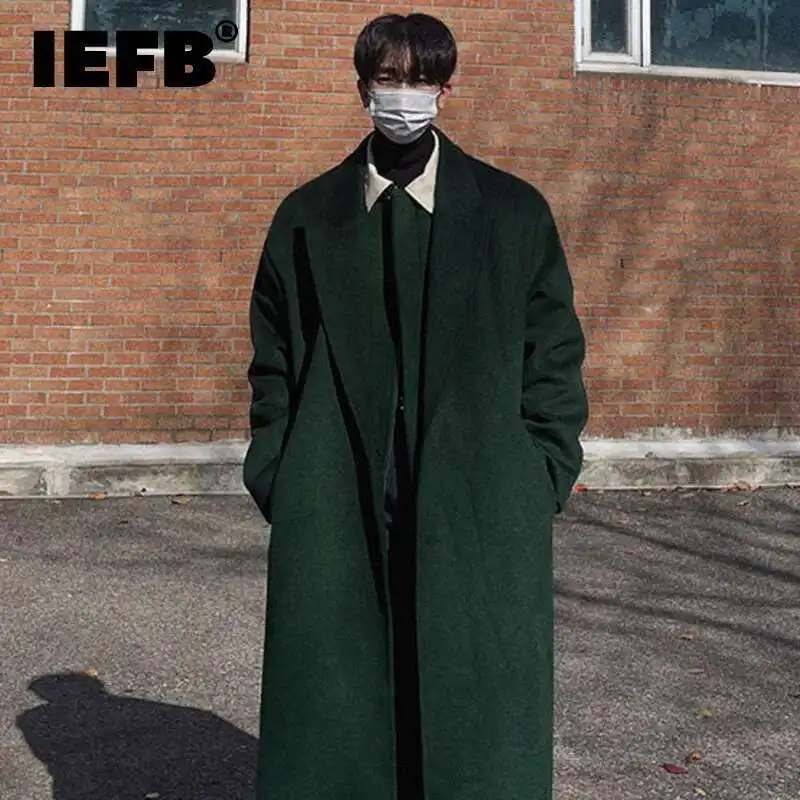
Technical Specifications:
| Feature | Specification |
|---|---|
| Insulation | Body-mapped synthetic insulation (heavier in core, lighter in arms and shoulders) |
| Fill Weight | 9.8 oz (278g) distributed strategically |
| Shell Material | 4-way stretch fabric with mechanical ventilation system |
| Weight | 2.9 lbs (1.3kg) |
| Temperature Rating | -15°F (-26°C) during activity |
| Hood | Helmet-compatible with multiple adjustment points |
| Length | Hip-length with drop-tail coverage |
Dynamic Performance:
What distinguishes the Alpine Motion is its sophisticated approach to managing body heat during fluctuating activity levels. The mechanical ventilation system—featuring chest, underarm, and back vents—allows precise temperature regulation without removing the coat. This prevents the perspiration buildup that can become dangerously chilling during activity pauses.
The articulated cut and stretch panels enable unrestricted movement without compressing insulation or creating drafts—a common failure point in many winter coats during active use. The body-mapped insulation places heavier fill in the core while reducing bulk in articulation zones, maintaining warmth without restricting mobility.
Understanding the tradeoffs between short and long coat styles is particularly important for active use, where mobility considerations must be balanced against coverage benefits.
For winter hiking, skiing, snowshoeing, or working outdoors, the Alpine Motion provides the rare combination of serious cold protection with the performance features needed for sustained activity—making it the standout choice for those who can’t let extreme cold limit their movement or productivity.
Most Durable Extreme-Weather Coat: The Northern Fortress Heavy-Duty Parka
For those who need a coat that can withstand not just extreme temperatures but also punishing physical conditions, the Northern Fortress Heavy-Duty Parka offers exceptional durability without sacrificing warmth performance.
Technical Specifications:
| Feature | Specification |
|---|---|
| Insulation | 700 fill power down with reinforced synthetic overlay |
| Fill Weight | 15.3 oz (434g) |
| Shell Material | 500D nylon with reinforced wear zones (shoulders, forearms, lower back) |
| Weight | 5.1 lbs (2.3kg) |
| Temperature Rating | -30°F (-34°C) |
| Hood | Heavy-duty insulated hood with wire brim and removable wind panel |
| Length | Mid-thigh with side zips for mobility |
Built to Last:
The Northern Fortress stands apart through its exceptional construction quality and material selection. The high-denier shell fabric resists abrasion, tears, and punctures far better than typical winter coats, while reinforced zones in high-wear areas provide additional protection where it’s needed most.
Heavy-duty hardware throughout—including oversize YKK zippers, metal snaps, and reinforced cord locks—ensures critical closures continue functioning in harsh conditions. The bar-tacked stress points and triple-stitched seams prevent failures even under heavy loads or during demanding physical work.
Despite its focus on durability, the Northern Fortress maintains excellent thermal efficiency through its thoughtful insulation system. The synthetic overlay protects the down fill from compression and moisture in key areas, preserving loft and warmth performance over time.
For those working in demanding outdoor environments or requiring a coat that will last through many seasons of heavy use, the Northern Fortress represents an excellent long-term investment—providing consistent protection year after year in conditions that would quickly degrade lesser garments.
Understanding Insulation: The Science of Extreme Warmth
To make an informed decision about extreme cold protection, you need to understand how insulation actually works. At the most basic level, insulation doesn’t generate heat—it traps the warmth your body produces by creating dead air space that slows heat transfer.
Down Insulation: Nature’s Best
Down remains the gold standard for weight-to-warmth ratio, offering exceptional insulation with minimal bulk. The quality of down is measured by fill power—a rating of how many cubic inches one ounce of down fills under standardized testing.
- Fill Power Explained:
- 550-650: Good quality, budget-friendly option
- 700-800: Excellent quality with superior loft
- 800-900+: Premium quality offering maximum warmth with minimal weight
Equally important is fill weight—the actual amount of down used. A coat with 6 oz of 900 fill down may provide less warmth than one with 10 oz of 700 fill, despite the lower quality. Always consider both metrics together.
Synthetic Insulation Advancements
Modern synthetic insulations offer compelling advantages in certain conditions:
– Maintain insulating properties when wet
– Dry more quickly when damp
– Generally more affordable than premium down
– Better for those with down allergies
The latest synthetic technologies use different fiber structures and thicknesses within the same garment to optimize warmth while reducing bulk—creating insulation systems that approach down’s efficiency while excelling in wet conditions.
Hybrid Systems: Best of Both Worlds
Many of the warmest coats now use hybrid systems that strategically place different insulations throughout the garment:
– Down in the core for maximum warmth
– Synthetic in moisture-prone areas (shoulders, cuffs, hood)
– Varying densities based on body mapping research
This approach maximizes thermal efficiency while addressing down’s traditional weaknesses, resulting in more consistent performance across varied conditions.
Shell Materials: The Critical Outer Defense
While insulation provides warmth, the shell material determines how well that warmth is preserved in challenging conditions. The outer layer serves multiple critical functions in extreme cold:
Wind Protection: The Invisible Threat
Wind dramatically accelerates heat loss through convection. A 0°F (-18°C) day with 30 mph winds creates an effective temperature of -24°F (-31°C)—a dangerous difference. Effective shells prevent wind penetration through:
– Tight weave construction
– Membrane technologies
– Strategic seam placement
– Proper closure systems
The most effective parkas for extreme weather feature multi-layer construction that completely blocks wind while maintaining breathability.
Moisture Management: Waterproof vs. Water-Resistant
In extreme cold, moisture management involves both external precipitation and body-generated moisture:
- Waterproof Shells (15,000mm+ water column rating):
- Completely prevent water penetration
- Incorporate sealed seams and water-resistant zippers
- Often include breathable membranes (Gore-Tex, etc.)
Essential for wet snow or mixed precipitation
Water-Resistant Shells:
- Repel light moisture through DWR (Durable Water Repellent) treatments
- More breathable than fully waterproof options
- Sufficient for dry, powdery snow environments
- Require more frequent retreatment to maintain performance
Durability Considerations
Shell durability directly impacts long-term performance in extreme environments:
– Denier ratings indicate fabric thickness (higher numbers = more durable)
– Ripstop construction prevents tears from spreading
– Reinforcement in high-wear areas extends usable life
– Face fabric treatments protect against UV degradation and contamination
The ideal shell balances protection, breathability, durability, and weight according to your specific needs and conditions.
Critical Design Features for Maximum Warmth
Beyond materials and insulation, specific design elements can dramatically impact a coat’s performance in extreme cold. These features often distinguish truly exceptional cold-weather protection from merely adequate options.
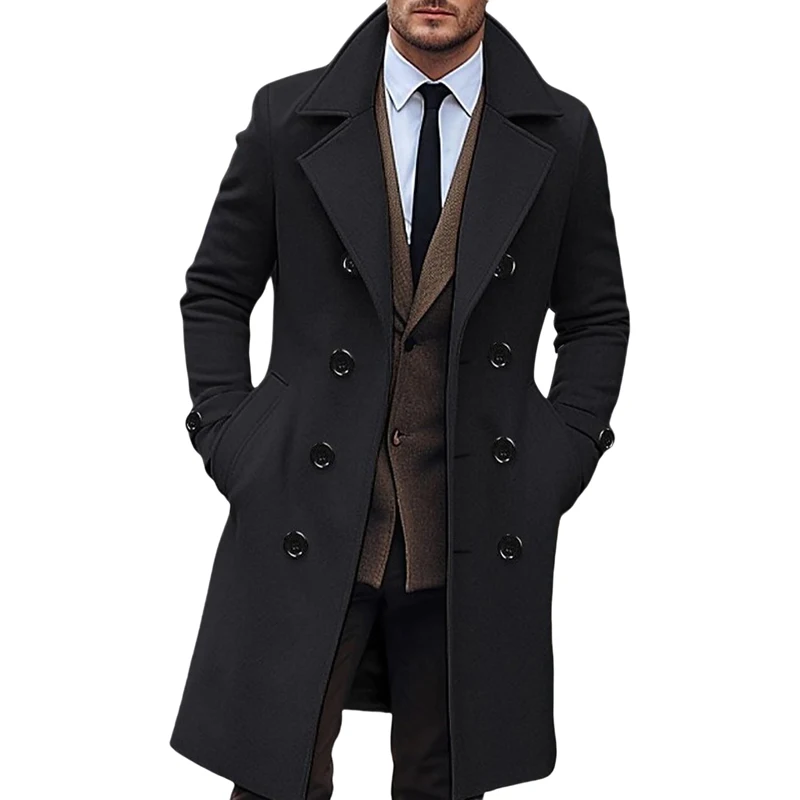
Hood Design: Your Head’s Microclimate
An effective hood is critical—you can lose up to 10% of your body heat through your head. The warmest coats feature:
– Adjustable openings that seal around the face
– Insulated construction (not just shell material)
– Wire or reinforced brims that shed snow and block wind
– Optional fur/faux fur ruffs that create a warming air pocket and block wind
– Face protection or breathing ports for extreme conditions
Strategic Draft Prevention
Cold air infiltration quickly negates even the best insulation. Superior coats incorporate:
– Interior storm cuffs (ideally insulated)
– Adjustable, sealed outer cuffs
– Two-way zippers with insulated draft tubes
– Snow skirts or extended back panels
– Adjustable hem systems with positive locking
When evaluating wool coats for cold climates, these draft prevention features become especially important as they complement wool’s natural insulating properties.
Effective Closure Systems
The front opening is potentially the largest vulnerability in any coat. The best designs include:
– Heavy-duty, smooth-operating zippers (often oversized for gloved operation)
– Double closure systems (zip + snap or velcro placket)
– Overlapping closure designs that prevent direct wind penetration
– High collars that protect the neck and lower face
– Strategic placement of closures to prevent pinch points or gaps
Pocket Design and Placement
Well-designed pockets contribute significantly to both warmth and functionality:
– Handwarmer pockets with insulation on both sides (not just the outer shell)
– Chest pockets placed for accessibility while maintaining core insulation
– Strategic internal pockets for electronic devices (body heat protection)
– Specialized storage for cold-weather essentials (gloves, face protection)
These design elements work together to create a complete thermal system that maintains warmth in challenging conditions.
Fit, Layering, and Individual Factors
Even the warmest coat will underperform if it doesn’t fit properly or isn’t layered effectively. Understanding these personal factors is essential for optimizing your cold-weather protection.
The Critical Importance of Proper Fit
For maximum thermal efficiency, a cold-weather coat should:
– Allow room for appropriate base and mid-layers without compression
– Provide full coverage when moving (reaching, bending, sitting)
– Seal effectively at all openings (wrists, hem, neck, face)
– Move with your body without creating gaps or draft channels
Most extreme cold coats are sized to accommodate layering—don’t size down unless you’re certain about your layering strategy.
Effective Layering Principles
The most effective extreme cold protection comes from a complete layering system:
– Base layer: Moisture-wicking materials that move perspiration away from skin
– Mid layer(s): Insulating layers that trap warm air (fleece, wool, synthetic fill)
– Outer layer: Your protective shell and primary insulation
Each layer serves a specific purpose, and omitting any component can significantly reduce overall effectiveness.
Personal Factors Affecting Perceived Warmth
Individual variation in cold perception is substantial and influenced by:
– Metabolic rate and circulation efficiency
– Body composition and fat distribution
– Acclimatization to cold environments
– Activity level and exertion patterns
– Hydration and nutrition status
These personal factors may require adjustments to your coat selection—someone who runs cold may need more insulation than standard temperature ratings suggest.
Mens Heavy Winter Coat, Mens Insulated Coat, Mens Parka Coat
Price range: $175.52 through $237.36 Select options This product has multiple variants. The options may be chosen on the product pageMens Big and Tall Winter Coats, Mens Down Coat, Mens Hooded Winter Coat, Mens Puffer Coat
Price range: $126.44 through $217.01 Select options This product has multiple variants. The options may be chosen on the product pageMens Big and Tall Winter Coats, Mens Hooded Winter Coat
Price range: $80.32 through $106.68 Select options This product has multiple variants. The options may be chosen on the product pageMens Cashmere Overcoat, Mens Hooded Winter Coat, Mens Wool Blend Coat
Price range: $128.72 through $139.68 Select options This product has multiple variants. The options may be chosen on the product pageMens Hooded Winter Coat, Mens Insulated Coat, Mens Puffer Coat, Mens Quilted Coat
Price range: $139.88 through $177.72 Select options This product has multiple variants. The options may be chosen on the product pageMens Double Breasted Pea Coat, Mens Hooded Winter Coat, Mens Quilted Coat
Price range: $81.00 through $108.48 Select options This product has multiple variants. The options may be chosen on the product page
How to Preserve Your Investment: Care and Maintenance
Quality extreme-weather coats represent a significant investment—proper care ensures they maintain peak performance for many seasons.
Down Care Fundamentals
To maintain loft and insulating properties in down garments:
– Clean only when necessary using down-specific cleaner
– Ensure complete drying with low heat and clean tennis balls to restore loft
– Store uncompressed on wide hangers or laid flat
– Air out after use before storage to remove moisture
– Never dry clean due to residues that damage down’s natural oils
Synthetic Insulation Maintenance
Synthetic fills require different care approaches:
– Can withstand more frequent washing than down
– Use technical wash products rather than standard detergents
– Avoid fabric softeners which reduce wicking properties
– Dry on low heat or air dry depending on manufacturer recommendations
– Inspect for compressed areas and manually restore loft if needed
Shell Maintenance for Long-Term Performance
Maintaining your coat’s outer defense system:
– Reapply DWR treatments when water stops beading
– Promptly clean visible contamination (oil, dirt) that can degrade materials
– Repair small tears or damage immediately before they spread
– Follow specific care instructions for specialized membranes (Gore-Tex, etc.)
– Use technical cleaners designed for performance fabrics
Storage Best Practices
Proper off-season storage significantly extends garment life:
– Clean thoroughly before long-term storage
– Store in cool, dry location away from direct sunlight
– Use breathable garment bags rather than plastic
– Include cedar blocks or other natural moth deterrents with natural materials
– Avoid hanging by loops or hooks which can distort insulation
With proper care, premium cold-weather coats can maintain their performance for 10+ years, making them an excellent long-term investment in comfort and safety.
Extreme Cold Safety: Beyond Your Coat
Even the warmest coat is just one component of a comprehensive approach to extreme cold safety. Understanding the broader context helps you stay safe and comfortable in challenging conditions.
The Complete Cold-Weather System
For true protection in extreme environments, consider:
– Insulated, waterproof footwear with appropriate socks
– Layered hand protection (liners plus insulated, windproof outer gloves/mittens)
– Insulated headwear that protects ears and neck
– Face protection (balaclavas, masks, or built-in coat features)
– Eye protection against wind, snow glare, and freezing
– Insulated pants or bibs for complete lower body protection
Recognizing Cold-Related Dangers
Learn to identify early warning signs of cold injuries:
– Numbness or tingling in extremities (potential frostbite)
– Shivering that cannot be controlled (hypothermia risk)
– Clumsiness or difficulty with fine motor skills
– Slurred speech or confusion
– Extreme fatigue or drowsiness
Addressing these symptoms immediately can prevent serious injury.
Preparation and Planning
Smart preparation significantly enhances safety in extreme cold:
– Check detailed weather forecasts including wind chill factors
– Plan appropriate shelter and backup options
– Carry emergency communication devices
– Pack spare insulation layers and emergency warming supplies
– Stay hydrated and nourished (dehydration accelerates heat loss)
– Inform others of your route and expected return times
Remember that even the best gear has limitations—knowing when to seek shelter or postpone activities is an essential cold-weather skill.
Frequently Asked Questions
What’s the difference between a parka and a jacket for extreme cold?
Parkas typically offer more coverage (mid-thigh or longer), heavier insulation, and more comprehensive weather protection features than standard jackets. They usually include insulated hoods and are designed specifically for cold-weather protection rather than just casual wear. For extreme cold, a parka’s additional length provides crucial protection for the core and upper legs.
How accurate are temperature ratings on winter coats?
Temperature ratings should be viewed as general guidelines rather than precise measurements. They typically assume proper layering underneath and moderate activity levels. Individual factors like metabolism, circulation, and cold tolerance can significantly affect your personal experience. It’s generally wise to choose a coat rated for temperatures lower than what you expect to encounter.
Can a coat be too warm for versatile use?
Yes. Extremely warm coats designed for static use in very cold environments can cause overheating during active use or in milder conditions. If your activities vary significantly, consider either a modular system with removable components or a coat with effective ventilation options. The best extreme cold coats include features to manage varying temperatures and activity levels.
Is down or synthetic better for sub-zero temperatures?
For dry, extremely cold conditions, high-quality down (800+ fill power) typically provides superior warmth-to-weight performance. However, in wet or fluctuating conditions, advanced synthetic insulations or hybrid systems may perform better by maintaining warmth when damp. Your specific environment and activities should guide this choice more than temperature alone.
How important is coat length for extreme cold protection?
Length is crucial for comprehensive protection. Longer coats (mid-thigh or below) provide significantly better core warmth by covering more of your body’s mass and preventing drafts from entering from below. The tradeoff is somewhat reduced mobility. For static activities in extreme cold, longer coats offer clear advantages; for active use, carefully consider the balance between coverage and freedom of movement.
How should an extreme cold weather coat fit?
The ideal fit allows space for proper layering without being excessively bulky. You should be able to comfortably raise your arms without significant hem lift, and closures should seal completely without straining. Pay particular attention to sleeve length (should cover wrists even when arms are extended) and hood fit (should allow head movement while maintaining coverage). Always try winter coats while wearing your typical cold-weather layers.
Is That Expensive Coat Really Worth It?
When facing serious cold, the premium price of high-performance coats often reflects genuine functional advantages rather than just brand prestige. Understanding where that value comes from helps you make smarter investments.
What Drives Cost in Premium Cold-Weather Gear
Higher prices in quality extreme-cold coats typically reflect:
– Superior insulation quality (higher fill power down costs significantly more)
– More sophisticated shell materials with better performance characteristics
– Advanced construction techniques that prevent cold spots and drafts
– Specialized features developed specifically for extreme environments
– More rigorous testing and quality control procedures
– Greater durability and longer usable lifespan
Performance Differences That Matter
The functional advantages of premium coats become most evident in challenging conditions:
– Maintaining warmth for longer durations in extreme cold
– Better performance when wet or in changing conditions
– More effective wind resistance at crucial points
– Greater comfort during extended wear
– More adaptability across varied activities and conditions
– Superior durability when subjected to hard use
The Long-Term Value Equation
When evaluating cost, consider:
– Years of expected service (quality coats often last 10+ years)
– Cost per use over the garment’s lifespan
– Performance reliability in conditions where protection matters most
– Resale value (premium brands often retain value better)
For occasional use in moderately cold conditions, mid-range options often provide adequate performance. For regular exposure to truly extreme conditions, premium coats frequently represent better long-term value despite higher initial cost.
When Warmth Isn’t Enough: Special Considerations
While this guide focuses primarily on warmth performance, certain situations require additional specialized features beyond basic thermal protection.
Specialized Work Requirements
For those working in extreme cold, considerations beyond basic warmth include:
– Compatibility with required safety equipment or harnesses
– Enhanced visibility features for low-light environments
– Specialized pocket configurations for tools or equipment
– Reinforcement in areas subject to work-specific wear
– Compliance with industry safety standards or regulations
Activity-Specific Adaptations
Different winter activities create unique demands:
– Winter sports may require enhanced mobility and moisture management
– Photography and other precision activities need specialized access and dexterity
– Extended backcountry travel demands lighter weight and compressibility
– Urban commuting benefits from features like two-way zippers for sitting
Accessibility and Special Needs
Standard extreme-weather gear may require modifications for:
– Limited mobility or dexterity (modified closure systems)
– Medical device accommodation (access ports, specialized pockets)
– Adaptive equipment compatibility (wheelchair-specific designs)
– Sensory sensitivities (alternative materials, modified features)
Many manufacturers offer customization options or specialized designs for these requirements—don’t compromise on warmth because of specific needs that standard designs don’t address.
When standard recommendations don’t fully address your specific situation, look for specialized gear designed for your particular requirements or consult with outdoor gear experts who can suggest appropriate modifications or alternatives.

